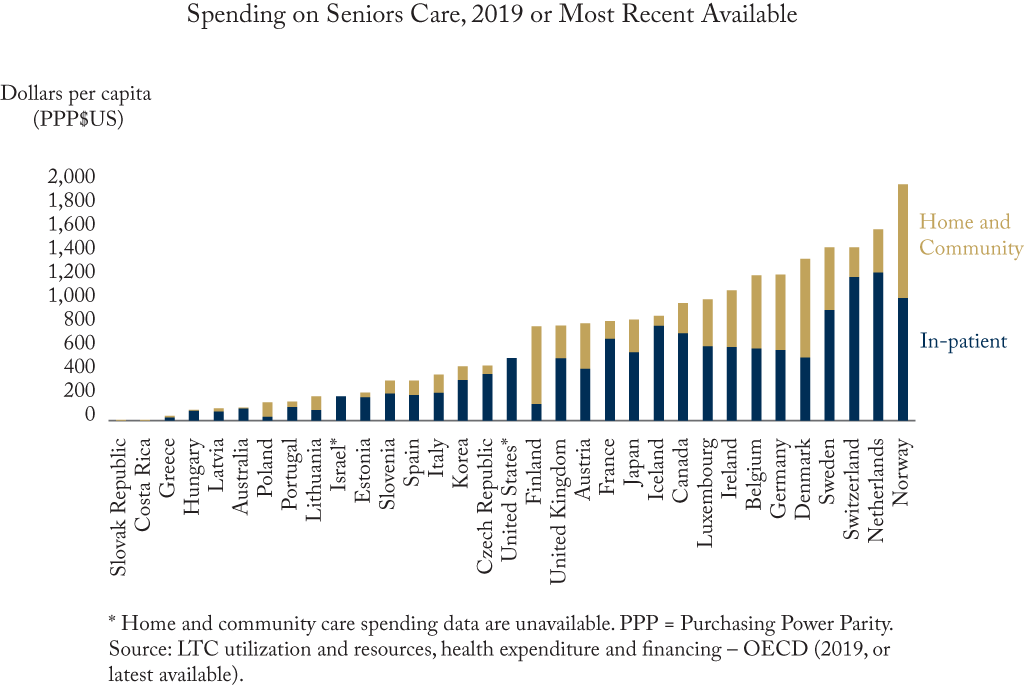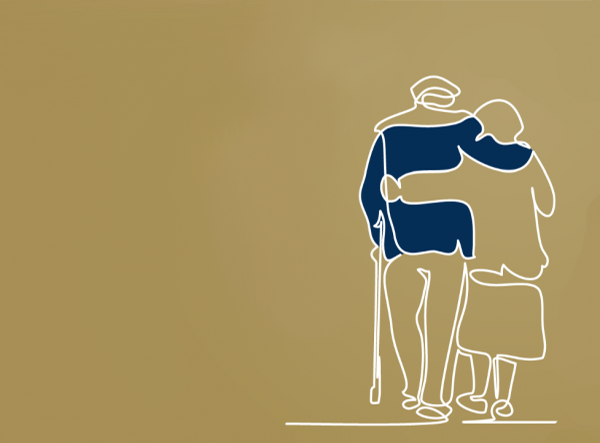Caring for Canada's Seniors
We need to change the way we care for our elderly.
Across the country, Canada's healthcare systems need structural change to offer our seniors better care outcomes and care options that work for them.
It’s time we re-evaluate how our healthcare system treats our seniors. Better is possible.
Moving Forward After COVID-19
COVID-19 strained an already dysfunctional seniors’ healthcare system, leaving many elderly Canadians in unreliable and sometimes tragic conditions. As Canada's population ages, our healthcare system will undergo increased strain — with too many seniors stuck in hospitals receiving aggressive, acute care.

Ounce of Prevention is Worth a Pound of Cure: Seniors' Care After COVID-19
Prior to the pandemic, Canada had long waitlists for long-term care homes and had fewer homecare providers than the international average. These existing shortfalls will be compounded by Canada’s ageing population as babyboomers surpass 80 years of age. Making necessary changes to improve the quality of long-term care — such as reducing occupancy per room, increasing staffing levels, supporting higher wages for care workers, constructing new facilities — would require nearly every new dollar of health spending be directed to seniors care, with annual costs projected to increase to 4.2 percent of GDP by 2040. This level of investment in seniors’ care is unprecedented and fiscally infeasible. Innovative approaches will be required.
Read the Report
Expensive Endings: Reining In the High Cost of End-of-Life Care in Canada
Despite spending more on medical care delivered at the end-of-life than other high-income countries, Canada performs poorly on most measures of healthcare quality – meaning Canadians are not getting value for their money.
With a few simple, feasible structural changes in end-of-life care, Canada’s healthcare system could save hundreds of millions of dollars annually. Canada has among the highest rates of hospitalization in the last three months of life (61 percent), despite the vast majority of Canadians (87 percent) preferring to receive end of life care at home. As well, most Canadians die in hospital (61 percent), far more than in England (47 to 51 percent), the Netherlands (28 to 31 percent) and the United States (20 percent).
Read the ReportCanada Underinvests In Community Care

Canada’s per capita spending on homecare and other outpatient and day program services falls below the international average. In general, countries that direct higher proportions of health spending to seniors care than Canada also spend more per capita on home care, outpatient care and day programs for seniors.
Overall, long term care in Canada appears to be slightly above average in terms of spending, number of beds relative to population size, and proportion of the population receiving care, but slightly below average in terms of investment on home and community care. While its total spending is above average, Canada doesn’t rank among the top countries on any of these factors. In fact, waitlists and shortages for institutional care beds are common, resulting in inefficient use of hospital resources.
By shifting more resources to community care, Canadian seniors can receive care that is more in line with their needs and wants, while making more efficient use of healthcare spending.
Learn more
Canada's Sky-High Cost for End of Life Care
If most Canadians want to die at home, why don’t we? Two out of three will die in a hospital and the cost is enormous. Doctors James Downar and Kieran Quinn offer solutions to cut costs and give us the end of life we want.
Sign up for updates
Want to get the latest research from the C.D. Howe Institute? Sign up below to get Canada's trusted policy intelligence.

Learn More about C.D. Howe Institute Ideas to Change Care Models in Canada

Shifting Towards Autonomy: A Continuing Care Model for Canada
Canadians would benefit from a new funding model for elder care.
Canadian provinces can learn important lessons from debates and reforms in other developed countries, specifically when it comes to offering individuals the option to receive a payment, or a cash voucher, allowing them to choose from a menu of services that are delivered where they want them.
Read the Report
Prioritize Problems Before Politics to Modernize Seniors Care in Canada
COVID exposed the inadequacies of existing conditions in seniors care and emerging issues related to improving infection prevention and control. Among them: reducing occupancy per room; increasing staffing levels to provide surge capacity and care continuity during crisis situations; and ensuring staff are trained and prepared to rapidly implement infectious disease protocols.
Achieving these changes, however, will require significant infrastructure upgrade investments, constructing new facilities, as well as paying higher wages to more workers.
Read the Report